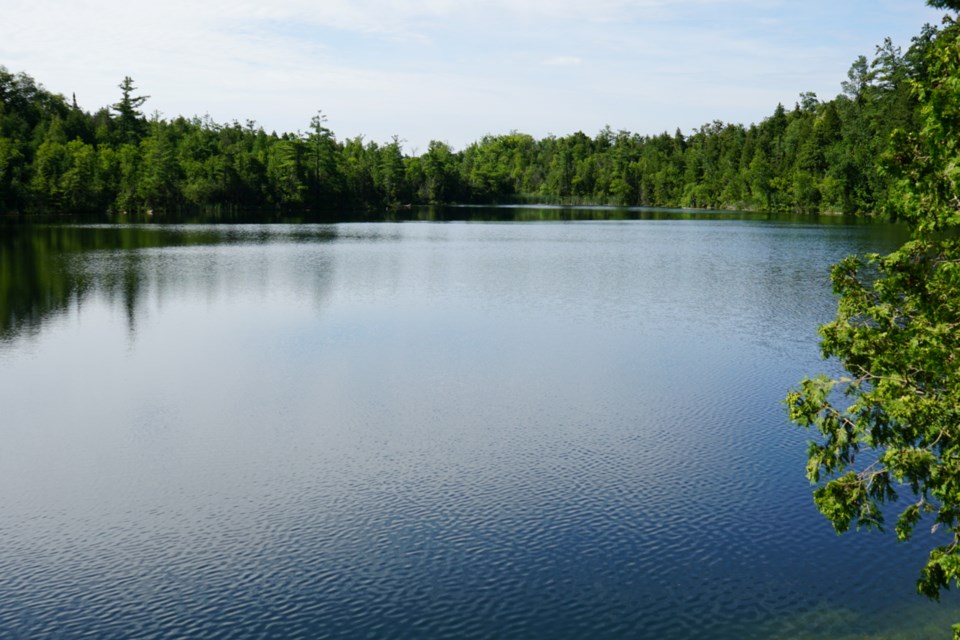CAMPBELLVILLE — Anyone who has taken a walk around Crawford Lake could tell you how picturesque and quiet it is, save for a few mosquitoes in July, but the significance of the spot goes deeper than that.
The lake on Guelph Line near Campbellville has been selected as one of 12 possible sites from around the world where researchers believe the start of the Anthropocene – a geological time period that humans have a profound impact on – may be observable.
The selected spot, estimated to be chosen by sometime in 2024, will be marked as the "golden spike".
“It’s been remarkable to see this team do all this work and, through that, understand the lake better,” Brenna Bartely, education manager at Crawford Lake, says. “We knew it was remarkable when we acquired the space in 1969, and when researchers first uncovered corn pollen from the sediment in the lake in 1971.”
The ground at the bottom of the 24-metre deep lake is exceptionally well preserved, thanks to a combination of two types of waters. The bottom few metres of the lake are fed by groundwater, which stays cold year round – approximately 4C (39F) compared to the 20C (68F) that the top reaches in the summer.
Those temperatures, and the mixture of waters, help to preserve both natural and man-made things from years ago.
“We’ve found plutonium from the atomic bombs, despite the fact that nuclear testing was nowhere near this area,” Michael Pisaric, geography and tourism studies professor at Brock University who worked on the project, says. “When the bombs were detonated, so much plutonium was sent into the atmosphere and stratosphere that it was dispersed globally.”
For reference, the closest nuclear bomb ever detonated to Crawford Lake was in a sealed underground shaft in Mississippi. The closest above ground was in Trinity Site, New Mew Mexico, nearly 3,000 km away.
As time passes and more and more debris falls to the bottom of the lake, researchers can identify each passing year, in a similar way they can with tree rings. The sediment never mixes together and instead layers itself, so researchers can clearly see when pollen or calcate from the rocks have formed on the bottom. Scientists have been able to collect about 1,000 years' worth of sediment, though Pisaric estimates there is probably closer to 10,000 years' worth of sediment to get through.
“We get darker layers during the winter, made up of algae and other things that live in the lake that has died off, which then settles at the bottom,” Pisaric says. “We get these very distinct bands of dark and light material that provide us with one year's worth of sedimentation.”
More work needs to be done to fully determine the site of the golden spike, which may be decided to be as far away as Beppu Bay in Oita, Japan.
“This is a big thing for Canada; researchers were doing extensive studies on other lakes and ocean basins in northern Europe,” Pisaric says. “For Crawford Lake to be selected is very significant. There’s not a huge number of these sites globally, it’s great for one to be here in Southern Ontario, and to be accessible by so many.”
Using what scientists have found at the bottom of the lake, including micro-plastic, the site may be used as a future education tool to show just how much humanity has impacted the Earth.
“When people talk about the Anthropocene, we tend to get caught up in the science,” Bartley says. “The science is important, but if we don’t close the loop and take ourselves through what the solutions are, then this whole process has failed to some extent. We need to be able to look at what the Anthropocene means for us as a society.
"It means humans have become the dominant force in shaping the planet, and it’s not to our benefit.”
